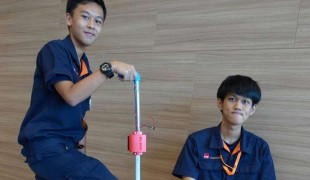- 11638
- 647
- 9
- 8
- 0
- Help Ukraine
About the solution
“I went out for a horse ride and had a really nasty accident which left me in a bit of a bad way, I only had a few days in hospital but I ended up with ligament damage to my right knee, I was on crutches and had a splint on my leg for almost a year. I was told by the people who know better at the hospital that it would be ok and they didn’t want to operate on me as I didn’t do the sport for my living it was a pass time hobby, so life went on,
However, over the years the falling over and stumbling got worse, so in 2008 I went to the doctors and the hospital and they decided that they would try to make me better and they would repair my post lacruciate ligament, so in 2009 I went off to hospital thinking my condition would improve, BIG MISTAKE.
I came out of hospital a few days later with my leg strapped up and in a splint and on crutches again. I could hardly move for weeks and it went all downhill from there”, Sharon explained.
She was told by her employer, in 2011, that she couldn’t do the job he employed her for anymore so she was being “medically retired”.
Sharon now hand paints and decorates different walking aids.
“Glamsticks™ are bespoke, Bling designer crutches, individually crafted for your personal use. You can either select directly from the catalogue that you can see online or I can provide a bespoke Bling item exactly to match your own design. Each Glamstick is hand-painted and individually designed and finished to a very high standard for durability”, it says on the official website.
"Glamsticks has been supplying sticks since 2009 and that I have had not just young and old but I have supplied paraolympians, and lira of other famous people
Glamsticks also supports disabled models and therefore I sponsor these ladies to try and help them to feel good about themselves. I don't just do crutches I have also done walking sticks and even a fully encrusted in Swarovski crystal running blade", Sharon told Patient Innovation.
Adapted from: http://glamsticks.co.uk/about-glamsticks/
What about you, do you have any solutions? Please share them with the Patient Innovation community!
This solution shall not include mention to the use of drugs, chemicals or biologicals (including food); invasive devices; offensive, commercial or inherently dangerous content. This solution was not medically validated. Proceed with caution! If you have any doubts, please consult with a health professional.
DISCLAIMER: This story was written by someone who is not the author of the solution, therefore please be advised that, although it was written with the utmost respect for the innovation and the innovator, there can be some incorrect statements. If you find any errors please contact the patient Innovation team via info@patient-innovation.com
-
-
290
-
0
-
3478

Girl builds cane to help blind people
WALKING WITH A WALKING AID: Walking with a walking aid
Blindness
3d Printed
Walking Aid (wheelchair/walker/crutches)
Assistive Daily Life Device (to help ADL)
App (Including when connected with wearable)
Vision problems
Promoting self-management
Maintaining Balance and Mobility
Preventing (Vaccination, Protection, Falls, Research/Mapping)
Internal Medicine
Ophthalmology
Orthopedics
United Kingdom
-
-
-
280
-
0
-
5208

Students develop walking stick to prevent slipping on wet surfaces
WALKING WITH A WALKING AID: Walking with a walking aid
Neuromuscular Disorders
Walking Aid (wheelchair/walker/crutches)
Assistive Daily Life Device (to help ADL)
Gait abnormalities (e.g., walking difficulties, unsteady gait)
Muscle cramps or spasms
Difficulty coordinating movements
Stiffness or rigidity (difficulty moving)
Muscle weakness
Loss of balance
Maintaining Balance and Mobility
Preventing (Vaccination, Protection, Falls, Research/Mapping)
General and Family Medicine
Neurology
Orthopedics
Rheumatology
Singapore
-
-
-
432
-
0
-
6123

A paciente co-desenvolve um andador estável para aumentar sua segurança
WALKING WITH A WALKING AID: Walking with a walking aid
Urban exploration
Cerebral Palsy
Assistive Daily Life Device (to help ADL)
Walking Aid (wheelchair/walker/crutches)
Difficulty coordinating movements
Loss of balance
Promoting self-management
Preserving Organ Function
Maintaining Balance and Mobility
Preventing (Vaccination, Protection, Falls, Research/Mapping)
Neurology
Orthopedics
Rheumatology
United States
-
 en
en